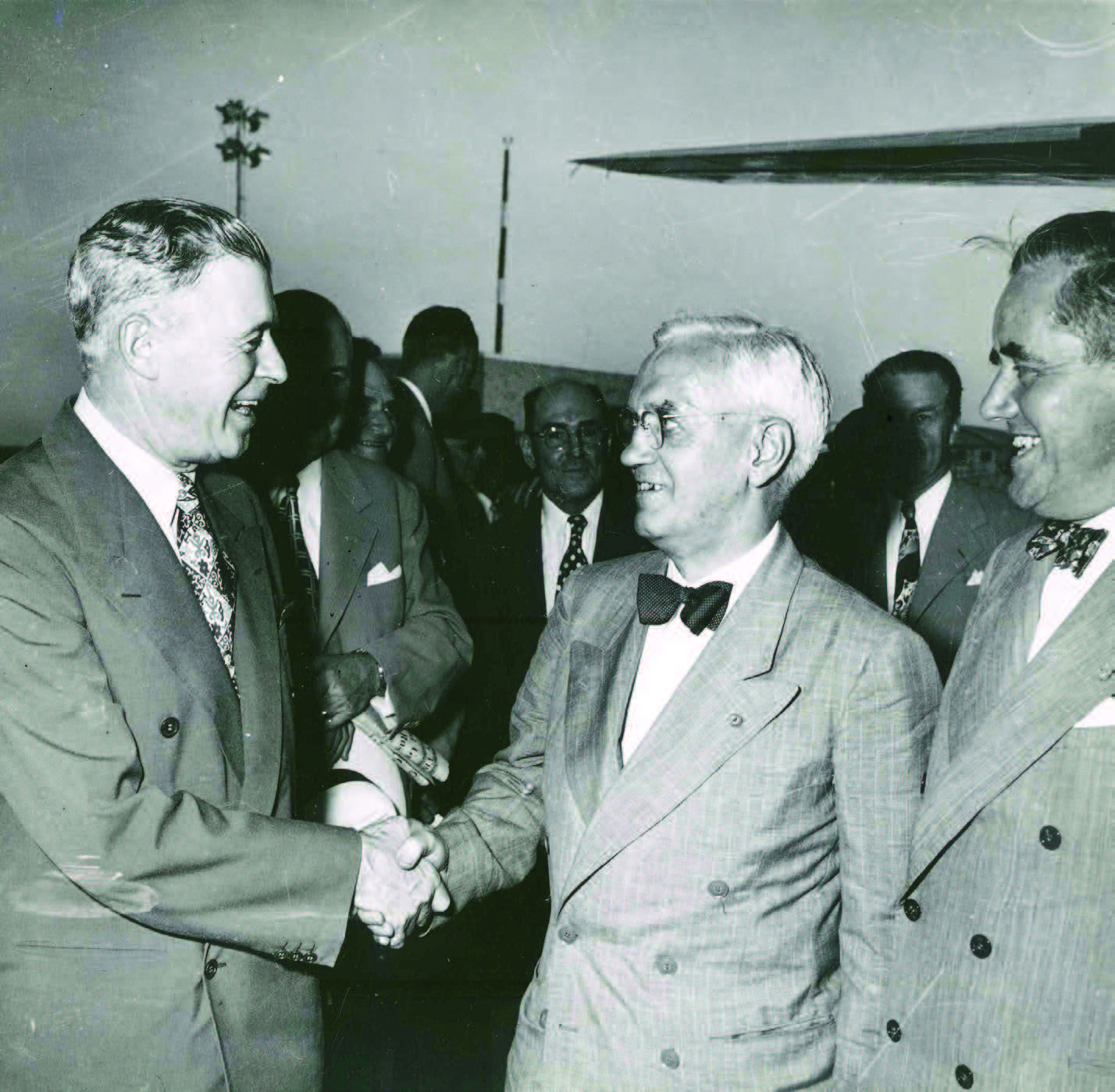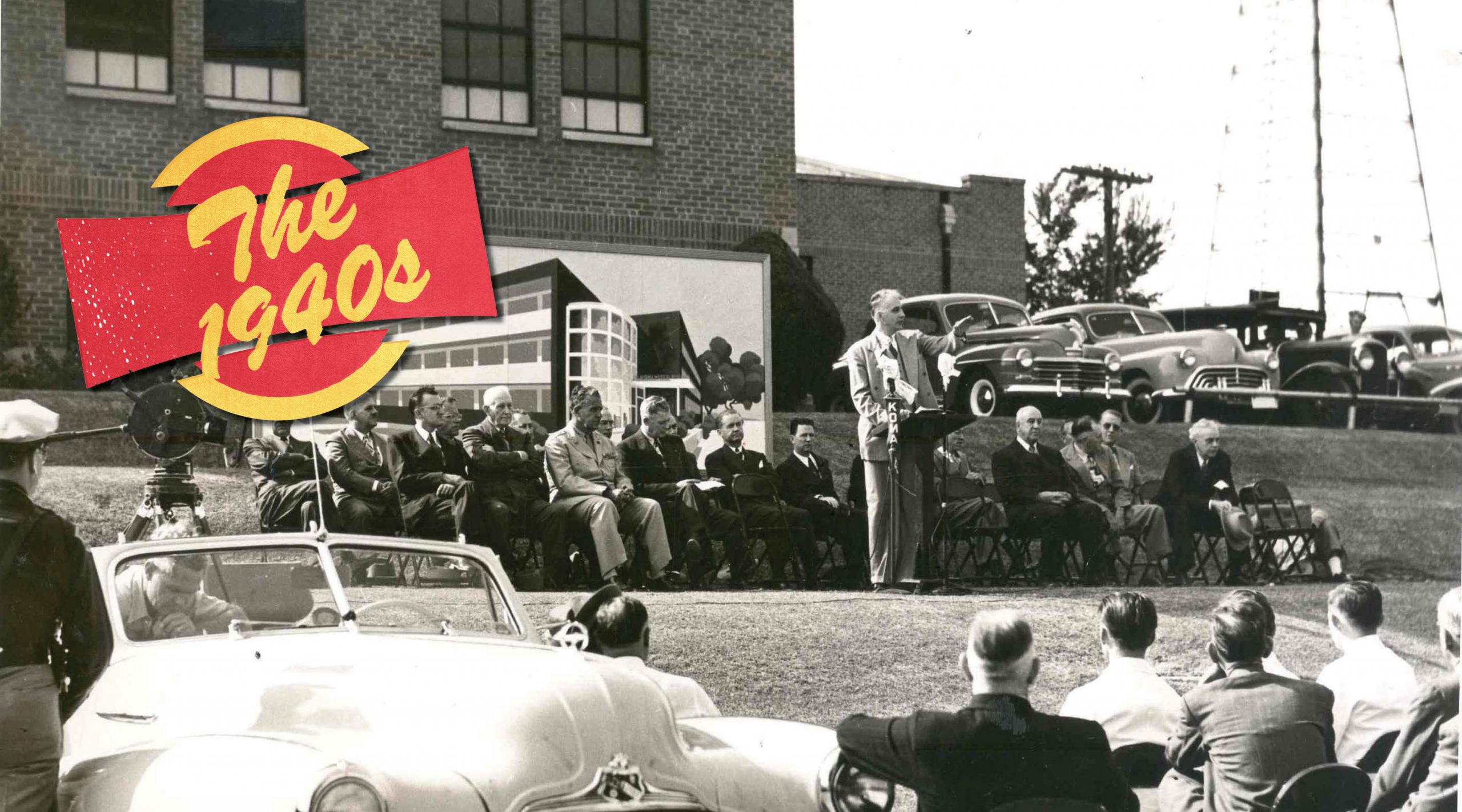Like every institution, OMRF began as an idea.
“While the world was still engaged in a war of destruction,” explains an early fundraising brochure, a group of University of Oklahoma College of Medicine faculty and alumni “were dreaming of a world in which medical advances would alleviate pain and disease.” That dream was set to paper when 30 Oklahoma physicians and civic leaders signed the charter of a nonprofit corporation that would be called the Oklahoma Medical Research Foundation. On Aug. 28, 1946, the Secretary of State of Oklahoma granted that charter, and OMRF was born.
The new organization would conduct “scientific investigations in the field of medical research to attack killing and crippling diseases about which little is known by science.” Its founders saw research as an important investment – “Not a charity, not a philanthropy, but Oklahoma’s greatest gift to ourselves and humanity.”
The state legislature provided a site for the foundation, unanimously granting it a parcel of land on Northeast 13th Street in Oklahoma City. Statewide awareness and fundraising campaigns followed.
Gov. Roy J. Turner declared the first week in May of 1947 Research Week, which saw a dozen nationally prominent out-of-state scientists canvas Oklahoma to trumpet the value of medical research and the nascent foundation. In seven days, advocates held 137 meetings in 42 cities across the state.
Those efforts yielded a series of statewide radio broadcasts (remember, this was 1947) and more than 100 newspaper articles. That publicity laid the groundwork for a series of fundraising campaigns, with targeted initiatives directed at health care professionals such as doctors and nurses. To make appeals to the general public, a committee divided the state into 25 districts, with local captains appointed to lead each. They received help from national celebrities including Sherman Billingsley, an Oklahoma native and owner of New York’s famed Stork Club; Walter Winchell, the leading radio commentator of his day; and World War II hero and movie star Audie Murphy. (A portion of the proceeds of his film “Bad Boy” went to OMRF.)
All told, the campaigns generated more than $2 million in gifts and pledges — the smallest, 30 cents, to the largest, $26,000 — from 7,500 Oklahomans. In 1949, with the bold promise “That more may live longer,” construction of the new foundation’s campus began.

‘A frightful gamble’
“Here today in Oklahoma City, you are giving birth to a new medical research foundation. Who knows what it is going to bring forth? You might call it a frightful gamble, just as it is a gamble when a baby is born into this world, or when a bore is sunk for oil. But the results of the work done here may prove a thousand times more valuable to humanity than all the oil in Oklahoma.
When people are planning new research institutes, there is a tendency to put a large part of the funds to ornamentations so that when it is shown off to visitors, they will comment on the gorgeous building. But real researchers do not wish to work in marble halls.
My own laboratory was described in an American paper a year or two ago as resembling the back room of an old-fashioned drug store. But I would not change it for a gorgeous suite.
For the research worker, there is no joy equal to that of a discovery, however small and unimportant. That is what keeps the true research worker going. The glory of a good bit of work is that it paves the way for a further advance which may lead to its own eclipse.
Before I sit down, I would like to hand over to the medical research foundation this small culture of the original penicillin, which was the beginning of penicillin research. How this mold came to me and where it came from, no one knows. And when it came I did not want it. But it has fulfilled its purpose.
This small memento may serve as a reminder to the research workers that there is a divine power which may direct them into the true path.”
Sir Alexander Fleming
Discoverer of penicillin
Condensed from a speech at OMRF’s dedication ceremony
July 3, 1949
—
Read more from this issue of Findings
1940s: A Dream Becomes Reality
1950s: Opening the Doors
1960s: All Hands on Deck
1970s: Finding Firm Footing
1980s: A Time of Growth
1990s: Making A Mark
2000s: Eureka Moments
2010s: Research on the Rise
2020s: A Promising Future



